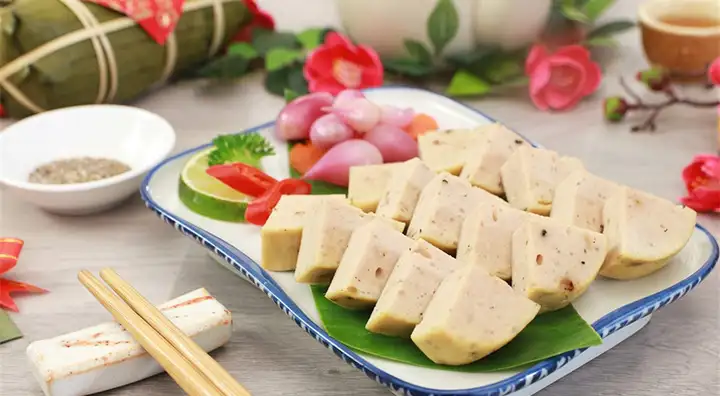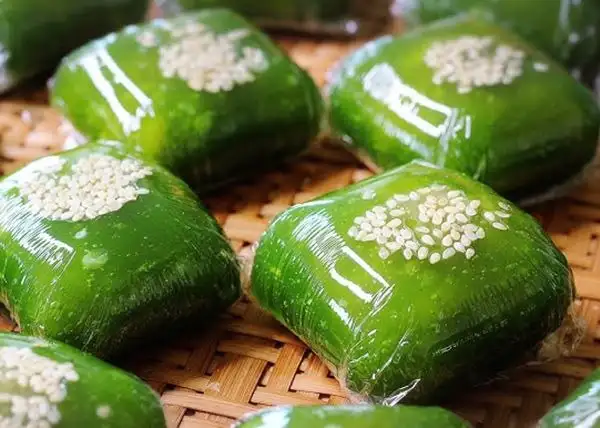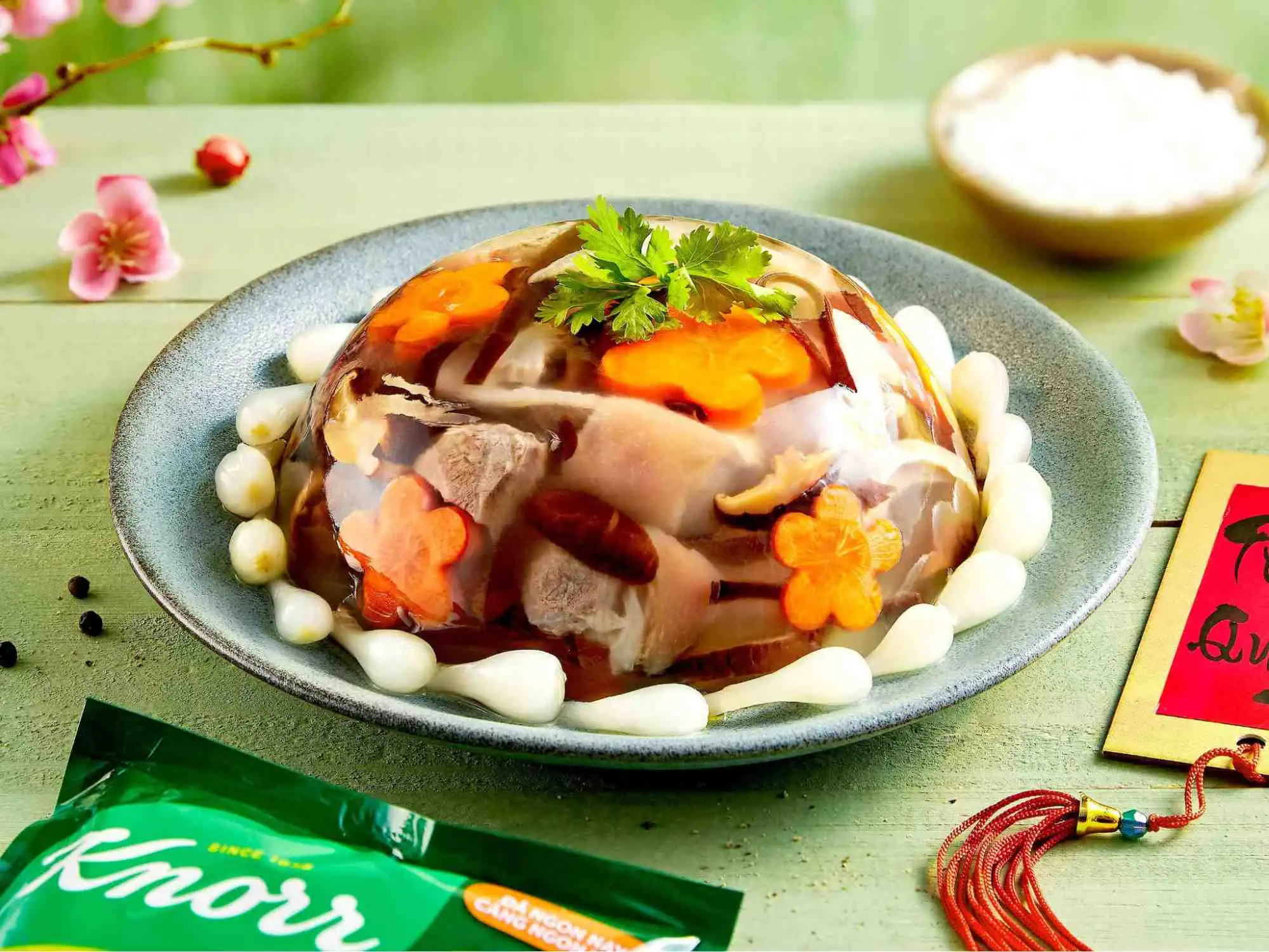A complete guide to the traditional Vietnamese wedding menu
The traditional Vietnamese wedding menu is a harmonious blend of flavors, representing the country’s diverse culinary heritage. Let Bliss Hoi An Beach Resort & Wellness help you to explore the must-have dishes for the special day of Vietnamese weddings!
Significance of the traditional Vietnamese wedding menu
In Vietnamese weddings, the feast is one of the most important parts of the celebration, reflecting both hospitality and cultural values. Each dish is carefully selected not only for its delicious flavors but also for its symbolic meaning, representing wishes for happiness, prosperity, and longevity. A well-prepared wedding menu ensures that guests feel welcomed and that the newlyweds receive blessings for a harmonious future.
In a traditional Vietnamese wedding banquet, although the menu includes appetizers, main dishes, and desserts, the food is not served in separate courses like in Western dining. Instead, all dishes are presented at the same time, allowing guests to freely choose and enjoy their meal as they wish.
While the specific menu varies by region, some essential dishes are found in almost every wedding banquet, such as steamed chicken with lime leaves, sticky rice, fried spring rolls, and savory meat or seafood dishes.
Must-have dishes in a traditional Vietnamese wedding menu
While the specific menu may vary by region, certain dishes remain essential in almost every wedding, reflecting the deep-rooted customs of Vietnamese cuisine. Below are some of the most important and meaningful dishes found in a traditional Vietnamese wedding banquet:
Boiled chicken with lime leaves (ga luoc la chanh)
Boiled chicken with lime leaves is one of the most traditional and symbolic dishes in a Vietnamese wedding banquet. The chicken is carefully selected and boiled until it reaches a beautiful golden-yellow color, then sliced into bite-sized pieces and neatly arranged on a plate. A sprinkle of finely shredded lime leaves adds a fragrant touch, enhancing the dish’s flavor.

This dish holds deep cultural significance, representing purity, prosperity, and family unity. In many Vietnamese weddings, a boiled chicken dish is presented as part of the engagement ceremony, symbolizing sincerity and respect. Served with a dipping sauce made of salt, pepper, and lime juice, this dish is not only delicious but also a meaningful part of the wedding celebration.
Gac sticky rice (xoi gac)
Gac sticky rice is an essential dish in Vietnamese wedding banquets, known for its vibrant red-orange color, which symbolizes happiness, luck, and prosperity. Made from glutinous rice mixed with gac fruit (a type of bright red Vietnamese fruit), this dish is naturally sweet, fragrant, and visually appealing.
The red color of xôi gấc is particularly important in Vietnamese culture, as it represents good fortune and a bright future for the newlyweds. Traditionally, it is served in a round or heart-shaped mold to signify unity and everlasting love. Often paired with steamed chicken or Vietnamese sausage (giò lụa), xôi gấc not only adds a festive touch to the wedding feast but also carries deep cultural meaning.
Vietnamese pork sausage (gio cha)
This delicacy is made from finely pounded pork, seasoned with fish sauce, and wrapped in banana leaves before being steamed (gio lua) or deep-fried (cha chien).

Guests typically enjoy gio cha with sticky rice, pickled vegetables, or dipping sauces such as fish sauce with chili. The combination of flavors, from the richness of the pork sausage to the slight tanginess of the pickles, creates a well-balanced and satisfying dish that is beloved in Vietnamese wedding feasts.
Fried spring rolls (nem ran)
Crispy on the outside and flavorful on the inside, nem ran is a staple in Vietnamese wedding banquets, bringing a sense of warmth and celebration to the feast. Each bite offers a perfect balance of textures, a crunchy golden shell encasing a savory filling of minced pork, shrimp, mushrooms, and vermicelli.
Husband and wife cake (banh phu the/ banh xu xe)
Banh phu the, also known as “husband and wife cake,” is a symbolic dessert in Vietnamese wedding banquets, representing eternal love, fidelity, and a harmonious marriage. This delicate treat is made from glutinous rice flour, infused with pandan for fragrance, and filled with a sweet mung bean and coconut mixture. The chewy, slightly translucent outer layer contrasts beautifully with the soft, rich filling, creating a delightful texture.

According to the Vietnamese concept of yin and yang, this is not a sweet dessert but also carries deep symbolic meaning about the harmony between humans and nature, as well as among family members.
While these dishes are staples of a traditional Vietnamese wedding menu, the evolution of tastes, preferences, and regional influences over the years has brought about new variations and adaptations.
Modern wedding banquets may feature a mix of traditional and contemporary dishes, incorporating seafood, Western-inspired courses, or creative reinterpretations of classic recipes. Despite these changes, the essence of a Vietnamese wedding feast remains the same, a celebration of love, unity, and well-wishes for the newlyweds, expressed through meaningful and delicious cuisine.
Northern Vietnam wedding menu
In Northern Vietnam, wedding banquets are known for their elegance, balance, and refined flavors. Traditional Northern cuisine emphasizes mild seasoning, natural flavors, and meticulous preparation, creating a sophisticated dining experience for guests. Let’s explore some of the most essential dishes that make up a traditional Northern Vietnamese wedding menu.
In traditional Northern Vietnamese weddings, especially in Hanoi, the menu not only showcases culinary sophistication but also carries blessings for the newlyweds.
Appetizers
Appetizers play an essential role in awakening the palate and setting the tone for the feast. These dishes are carefully selected to balance crisp textures, sweet and sour flavors, and light yet enticing aromas.
- Vietnamese banana flower salad with pig’s ear (nom hoa chuoi tai heo)
This refreshing salad combines crisp banana flower with chewy slices of pig’s ear, creating a delightful contrast in texture. Tossed in a tangy-sweet dressing with fresh herbs and crushed peanuts, it is a light yet flavorful way to start the wedding feast.
- Chicken and sweet corn soup (sup ga ngo)

A comforting and mild-flavored soup, this dish features shredded chicken and sweet corn in a silky, thickened broth. It is a popular choice for weddings as it is easy to enjoy and appeals to guests of all ages.
- Vietnamese pork sausage (gio cha)
Soft and flavorful, this traditional delicacy is made from finely ground pork, wrapped in banana leaves, and steamed to perfection. The rich, savory taste makes it a staple in Northern wedding menus, often served in elegant slices.
- Fermented pork with roasted rice powder (nem thinh)
This specialty dish of Nam Dinh offers a unique nutty aroma and slightly tangy taste. Thinly sliced pork is mixed with roasted rice powder, lime leaves, and fresh herbs, making it a fragrant and appetizing start to the meal.
Main dishes
Main dishes in a traditional Northern Vietnamese wedding banquet showcase a diverse range of flavors, from rich and savory to light and fragrant, reflecting the region’s culinary sophistication and cultural heritage.
- Boiled chicken with lime leaves (ga luoc la chanh)
The chicken is gently cooked to maintain its natural sweetness, then sliced and garnished with finely chopped lime leaves for a fragrant and refreshing touch.
- Gac sticky rice (xoi gac)
Bright red-orange in color, this sticky rice dish represents luck and happiness in Vietnamese weddings. The natural sweetness of gac fruit blends perfectly with the soft and chewy texture of glutinous rice, making it both visually appealing and delicious.
- Lang Son roasted duck (vit quay Lang Son)
Originating from the mountainous region of Lang Son, this roasted duck is famous for its special seasoning with mac mat leaves, a local spice. The traditional charcoal-roasting method results in crispy, aromatic skin and tender, flavorful meat inside.
- Jellied meat (thit dong)

A traditional dish popular in Northern Vietnam, jellied meat was originally created as a way to preserve food during the cold winter months. Slow-cooked with pork, pig’s ear, and wood ear mushrooms, it naturally forms a gelatinous texture when cooled. Paired with pickled onions, this dish offers a perfect balance of flavors.
- Crispy spring rolls (nem ran)
With a perfectly golden, crunchy exterior, these spring rolls encase a flavorful blend of minced pork, shrimp, mushrooms, and vermicelli. Paired with fragrant herbs and a zesty dipping sauce, they add a satisfying crunch to the wedding feast and are always a crowd-pleaser.
Desserts
Let’s explore some of the most cherished desserts in Northern Vietnamese wedding feasts.
- Lotus seed and longan sweet soup (che long nhan hat sen)

A delicacy from Hanoi, this sweet soup features fragrant lotus seeds carefully simmered inside longan fruit. Symbolizing peace and prosperity, it offers a light, refreshing taste, perfect for concluding a hearty meal.
- Green sticky rice cake (banh com)
Banh Com is made from sticky rice and mung bean filling, wrapped in delicate green rice flakes. Traditionally given as engagement gifts, this chewy, aromatic dessert represents happiness and fidelity in marriage.
- Sweet mung bean paste (che kho)
The wedding menu in Nam Dinh also features che kho, a rich and smooth mung bean dessert delicately infused with ginger and sprinkled with sesame seeds.
- Banh dau xanh (mung bean cake)
Originating from Hai Duong, these small, soft mung bean cakes melt in the mouth, leaving a subtle sweetness. Often enjoyed with tea, they represent elegance and the refinement of Northern cuisine.
Southern Vietnam wedding menu
In Southern Vietnam, wedding banquets are known for their vibrant flavors, generous portions, and a mix of influences from different culinary traditions. Let’s explore some of the must-have dishes in a traditional Southern Vietnamese wedding feast.
Appetizers
These starters are often fresh, vibrant, and rich in texture, reflecting the region’s love for bold flavors and colorful presentations.
- Lotus stem salad with shrimp and pork (goi ngo sen tom thit)

A refreshing and crunchy salad made from lotus stems, shrimp, and pork, tossed in a tangy fish sauce dressing and topped with crushed peanuts and fresh herbs.
- Savory sticky rice dumplings (banh it tran)
Soft, glutinous dumplings filled with seasoned ground pork and mung beans, served with a light, fragrant dipping sauce. This is a Southern favorite, symbolizing good fortune and happiness.
- Seafood spring rolls (nem hai san)
A crispy delight featuring a filling of shrimp, squid, and minced pork wrapped in thin rice paper and deep-fried to perfection. Often served with sweet chili dipping sauce, these rolls add a touch of indulgence to the wedding feast.
Main dishes
Each main dish has a generous portion and bold flavor, showcasing the region’s diverse culinary influences.
- Roasted suckling pig (heo quay)
A symbol of prosperity and celebration, roasted suckling pig features crispy golden skin and tender, flavorful meat. Often served with pickled vegetables and steamed buns, this dish is a centerpiece at Southern wedding banquets.
- Braised duck with bamboo shoots (vit tiem mang)
A rich and aromatic dish, braised duck is slow-cooked with bamboo shoots and medicinal herbs, creating a nourishing broth. This dish represents warmth and longevity in a wedding feast.
- Caramelized fish in clay pot (ca kho to)
A staple in Southern cuisine, this dish features catfish or snakehead fish simmered in a thick, sweet-savory caramel sauce. The deep, comforting flavors make it a must-have at traditional celebrations.
- Seafood hotpot (lau hai san)
Fresh seafood such as shrimp, squid, and fish is cooked in a fragrant, tamarind-based broth. This dish reflects the coastal influence on Southern cuisine and brings a communal dining experience to the wedding table.
- Stir-fried snails with coconut (oc xao dua)

A unique specialty of Ben Tre, this dish combines tender snails with creamy coconut milk and aromatic herbs. Its rich flavor and exotic appeal make it a highlight at Southern wedding feasts.
- Shaking beef (bo luc lac)
This dish consists of bite-sized beef cubes seared in a savory and slightly sweet sauce, served with fresh salad and tomato rice. Its rich flavor and tender texture make it a favorite in Southern wedding banquets.
- Beer-steamed chicken (ga hap bia)
A unique take on the traditional steamed chicken, this dish infuses tender chicken with the aroma of beer and aromatic herbs, creating a juicy and flavorful centerpiece for the meal.
Desserts
Desserts in Southern Vietnamese wedding menus are typically sweet dishes, reflecting the local preference for rich, aromatic, and refreshing flavors.
- Sweet lotus seed soup (che hat sen)
A light and refreshing dessert, this sweet soup features tender lotus seeds cooked in fragrant syrup. It symbolizes purity and longevity, making it a meaningful addition to wedding menus.
- Steamed banana cake (banh chuoi hap)
Made with ripe bananas, coconut milk, and tapioca starch, this soft and chewy cake is topped with rich coconut sauce and toasted sesame seeds. Its natural sweetness and creamy texture make it a wedding favorite.
- Mung bean pudding (che dau xanh)
This smooth and mildly sweet dessert is made from mung beans, coconut milk, and sugar. It provides a comforting and simple yet elegant end to the wedding feast.
- Coconut jelly (rau câu dừa)
A specialty from the coconut capital of Vietnam, this light, wobbly jelly is made from fresh coconut water and layered with creamy coconut milk. Its cooling effect makes it a popular choice for Southern wedding banquets.
- Sticky rice balls in ginger syrup (che troi nuoc)
Soft glutinous rice balls filled with mung bean paste are served in warm ginger syrup. This dish represents harmony and happiness, making it a symbolic dessert for newlyweds.
Read more: Central Vietnam places to visit: 12 breathtaking destinations you can’t miss
Central Vietnam wedding menu
The Central Vietnam region’s cuisine, deeply influenced by both royal traditions and local specialties, creates a wedding menu that is both elegant and flavorful.
Appetizers
- Steamed rice cakes (banh beo)

A delicate dish of soft, steamed rice cakes topped with minced shrimp, crispy pork rinds, and scallion oil, served with a light, savory fish sauce. It represents the elegance and sophistication of Hue’s royal cuisine.
- Fried sticky rice dumplings (ram it)
A unique combination of chewy steamed sticky rice dumplings and crispy fried rice cakes, stuffed with shrimp and pork. The contrasting textures make it a beloved appetizer.
- Jackfruit salad (goi mit non)
A refreshing salad made from tender young jackfruit, shredded pork, and fresh herbs, tossed in a tangy fish sauce dressing and topped with crunchy peanuts.
Main dishes
Each dish in the Central Vietnam wedding menu showcases the depth of the region’s cuisine, blending rich flavors with elegant presentation to create a memorable wedding banquet.
- Steamed chicken with lime leaves (Ga hap la chanh)
Tender chicken steamed to perfection with lime leaves, giving it a fragrant aroma and a vibrant golden skin. This dish symbolizes prosperity and unity in wedding celebrations.
- Braised beef with sugarcane molasses (Bo kho mat mia)
Slow-cooked beef infused with the natural sweetness of sugarcane molasses, complemented by the warmth of ginger and lemongrass. Often served with rice or bread.
- Steamed fish with rice paper (Ca hap cuon banh trang)
Fresh fish steamed with aromatic herbs, served with rice paper, fresh vegetables, and a flavorful dipping sauce, offering a refreshing and balanced taste.
- Cau Mong grilled veal (Be thui Cau Mong)
Succulent veal with crispy golden skin, sliced thin and served with rice paper, fresh herbs, and a signature fermented fish sauce for a bold and smoky flavor.
- Hue grilled pork skewers (Nem lui Hue)
Minced pork seasoned with aromatic spices, wrapped around lemongrass stalks, and grilled over charcoal. Best enjoyed with rice paper, herbs, and a rich peanut dipping sauce.
- Five-color seafood soup (Canh hai san ngu sac)
A colorful seafood soup featuring shrimp, squid, clams, and fresh vegetables, symbolizing harmony and prosperity in a wedding feast.
Desserts
These traditional desserts not only satisfy the sweet tooth but also carry cultural significance, adding a delightful ending to a Central Vietnamese wedding banquet.
- Sweet mung bean soup (che hoa cau)
A smooth and creamy mung bean dessert, delicately sweetened and often topped with coconut milk, offering a comforting and warm finish to the meal.
- Lotus seed and longan sweet soup (che hat sen long nhan)
A light and fragrant dessert made with tender lotus seeds and juicy longan, symbolizing purity and longevity in wedding celebrations.
- Steamed layer cake (banh da lon)

A chewy, multi-layered cake made from tapioca and mung bean flour, with alternating layers of green and yellow, representing harmony and prosperity.
- Coconut jelly (thach dua)
A refreshing, mildly sweet jelly made from fresh coconut water, offering a light and cooling treat after a flavorful wedding feast.
- Grilled sticky rice banana (chuoi nep nuong)
Ripe bananas wrapped in sticky rice, grilled until golden brown, and served with a rich coconut sauce, blending sweet and smoky flavors.
If you’re looking to experience a truly authentic traditional Vietnamese wedding, consider celebrating your special day at Bliss Hoi An Beach Resort & Wellness. With its serene beachfront setting and impeccable service, Bliss Hoi An offers the perfect venue to enjoy a beautiful Vietnamese wedding feast. Let their expert team take care of every detail, from the delicious traditional menu to creating unforgettable memories with your loved ones.
From the elegant flavors of the North to the bold and hearty dishes of the South, and the refined specialties of the Central region, each dish in the traditional Vietnamese wedding menu tells a story of regional pride and traditions. No matter the variations, the essence of a Vietnamese wedding feast remains the same: bringing people together to share joy, love, and prosperity.
Read more: Discover the magical beauty beneath the sea with diving Hoi An







